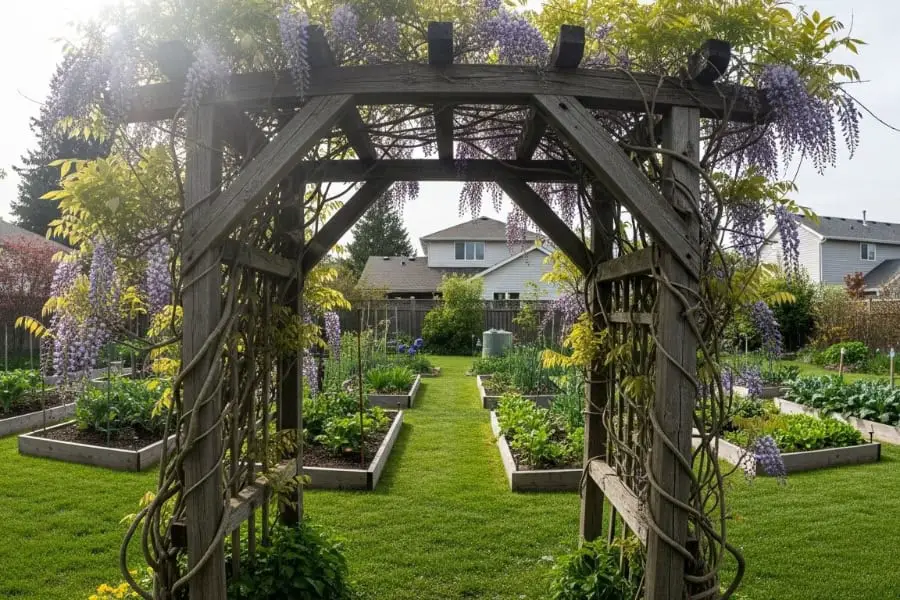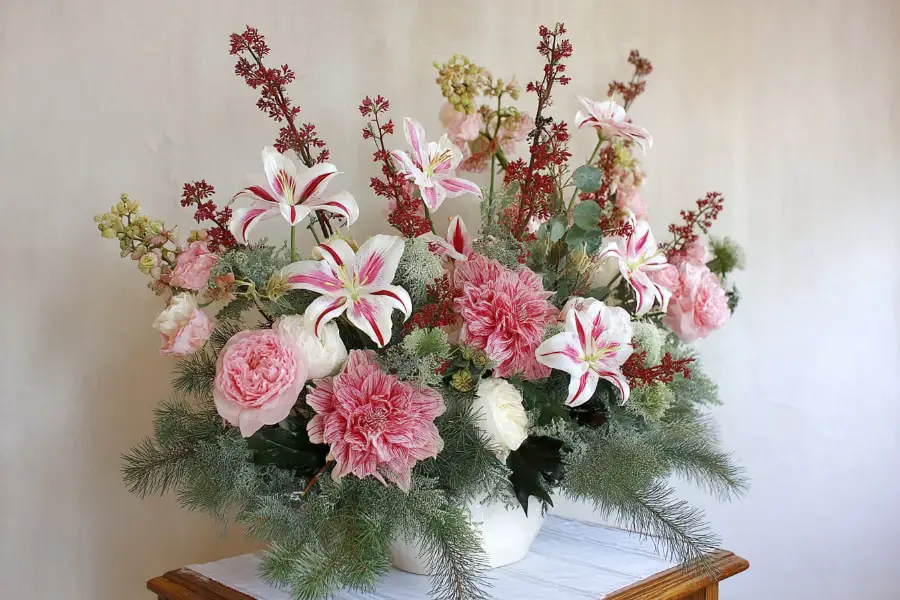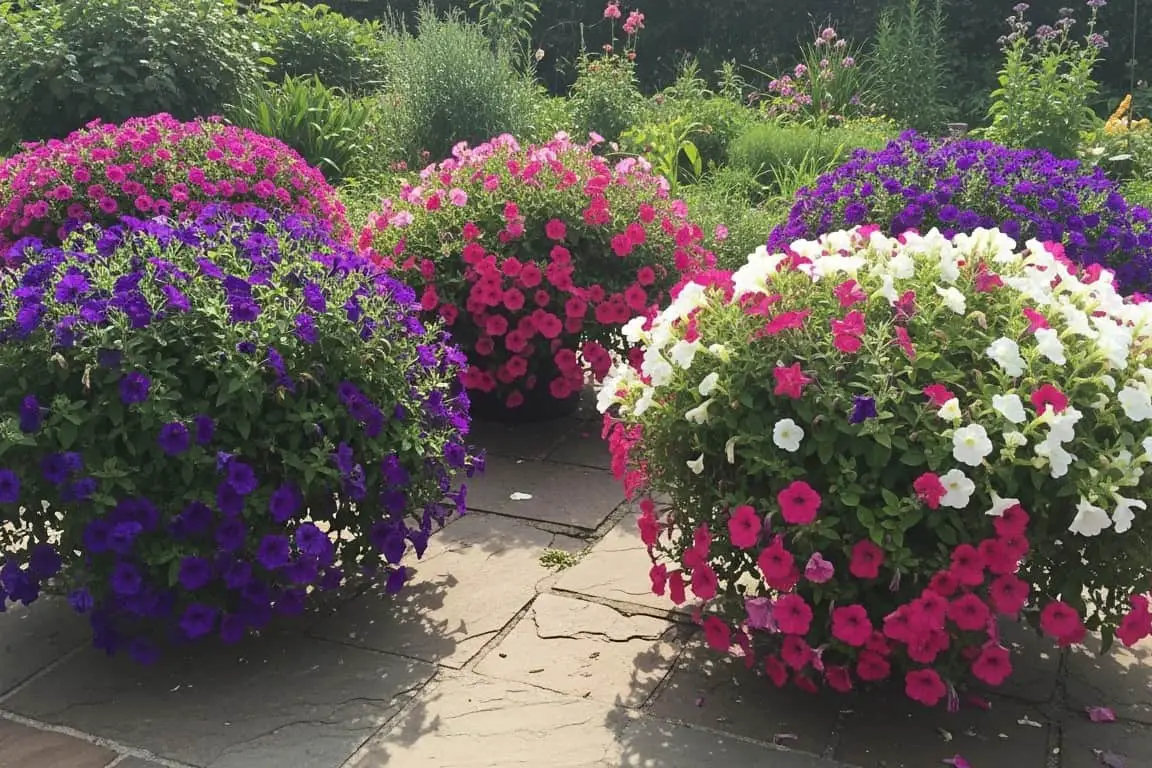Struggling to keep your petunias healthy and blooming? Petunias need proper care, like good soil drainage and regular fertilization, to thrive. This blog will share five simple tips to improve their growth and beauty.
Keep reading for easy ways to get better results!
Contents
Fertilization for Petunia Growth
Proper fertilization helps petunias bloom brighter and last longer. Use the right type of fertilizer to keep plants healthy and growing strong.

Time-release fertilizer
Time-release fertilizers provide a consistent supply of nutrients to petunias over time. These slow and controlled-release types are excellent for sustained plant nutrition. Including them at planting promotes growth for months without frequent reapplication.
This method of fertilization keeps blooms vibrant and healthy.
Using them monthly is suggested for preserving colorful flowers throughout the season. The steady nutrient provision also enriches soil quality, improving garden care routines. This straightforward approach strengthens petunia health while reducing the need for repeated feeding efforts.
Water-soluble fertilizer
Use a water-soluble fertilizer every week or after every third watering. This keeps petunias healthy with strong growth and plenty of blooms. A 24-12-17 ratio works best, giving them the right nutrients they need.
Products like Miracle-Gro or Proven Winners are great choices for container gardening.
Bloom boosters can help if flowering slows during the season. Add Proven Winners Continuous Release Plant Food mid-season to refill nutrients in soil. For more vibrant flowers, Beat Your Neighbor fertilizer is another good option gardeners love using on flowering plants.
Pot Size and Plant Selection

Choose a pot with good drainage—this keeps roots healthy. Pick strong plants that grow well and bloom often.
Choosing the right pot size
Large flower pots work best for petunias. A 12 or 14-inch pot can hold one to three plants, giving them space to grow without overcrowding. For smaller 10-inch pots, limit planting to three or four petunias.
Drainage holes are vital for healthy growth. They prevent water from pooling and harming roots. Using a pot with enough soil volume helps meet their growth requirements too. Overcrowding might seem fine at first, but petunias quickly fill the space as they bloom!
Selecting vigorous and trailing varieties
Vigorous and trailing petunia varieties provide fuller growth and bright blooms. Supertunias, Surfinas, and Super Cals are excellent for lush displays. They grow fast, bloom often, and need little upkeep.
Wave petunias can spread up to 4 feet wide with minimal care.
Small-flower types like Deco or Itsy offer cascading effects in pots or baskets. Cascadia, Sunghuna, Headliner, Flower Shower, Durabloom, Funhouse, and Inviva pcoa also work well for coverage.
Calibrachoa (Million Bells) looks like a mini petunia but doesn’t need deadheading for more blooms.
Hybrid vs. Seed PetuniasHybrid petunias, like Supertunias, offer long-lasting blooms and require less care. They cost more but put energy into flowering instead of making seeds. This makes them a favorite choice for gardeners wanting low-maintenance plants.
Seed petunias, such as Wave varieties, are cheaper and grow well in beds or pots. These types often need deadheading to keep blooming since they focus on seed production after pollination.
Caliburst Yellow is a popular option with small yellow flowers covering the plant densely.
Care and Maintenance

Keep petunias happy with steady care and attention. Healthy plants bloom more and stay vibrant longer.
Consistent watering
Petunias thrive with steady hydration. Check soil often by inserting a finger up to the first knuckle, then water if it feels dry. Aim for 1 to 2 inches of water each week. During hot summer months, they may need more frequent watering to avoid drying out.
Container-planted petunias lose moisture quicker than those in the ground. Deep watering helps soak the root zone and keeps flowers healthy. Supertunia varieties especially rely on regular watering for blooms.
As fall sets in and temperatures drop, adjust irrigation since their needs decrease significantly.
Pest control and wildlife issues
Too much water can attract pests, so good drainage is key. Earwigs often chew into petunia flowers and can be treated with Sluggo Plus, an organic option. Apply it every other week.
Budworms are also common threats. Use BT (Bacillus thuringiensis), a natural pesticide, once weekly for control.
Deer or rabbits might nibble on plants in some areas. Keep wildlife away by using repellents or fencing if needed. Healthy conditions like 5-6 hours of sun and well-draining soil reduce pest problems naturally.
Nearby plants like marigolds or lavender also keep insects at bay while adding variety to the garden!
Troubleshooting tips
Leggy growth with few blooms signals too much water or not enough sunlight. Petunias need 6 hours of daily sun for healthy blooms. If flowering slows, check root health and soil drainage.
Use compost in garden soil to avoid rot.
Overcrowding stunts growth and leads to stress. Limit plants in pots, like two per 10-inch container. Cut petunias back by 25% during stress; they recover within days if followed by regular fertilization.
Deadhead spent flowers often to promote new blooms and keep plants clean.
Move on now to growing petunias in hot climates!
Growing petunias in hot climates
Petunias thrive in hot climates like Texas and Arizona with proper care. They need at least six hours of direct sunlight daily for strong blooms. Placement is vital, so avoid placing them where the afternoon sun is strongest.
The north side of a building can help shield plants from extreme heat.
Consistent moisture is key, as these flowers wilt fast if left dry. Water deeply but avoid soggy soil to prevent root rot. Frequent feeding with premium water-soluble fertilizer boosts growth and blooming power during long summers.
Supertunia varieties perform well from spring to fall due to their heat tolerance. Trying different microclimates or shaded areas helps if challenges arise in hotter regions.
Personal Insights

Growing petunias in different climates can be a challenge, yet rewarding. The writer has had success cultivating them in Michigan’s temperate weather. In New Mexico, where it’s hotter and drier, experimenting with solutions for these conditions became key.
Choosing the right variety was essential. A mix-up at Lowe’s led to buying an unspecified type instead of “Wave” petunias. These were left with friends to test how they’d handle the tougher climate.
Dealing with deer wasn’t a problem during cultivation, which is good news for gardeners facing wildlife issues. Trying alternative flowers or plants alongside petunias is encouraged in difficult environments like deserts or humid areas.
The writer emphasizes observing which plants adapt best to each unique setting over time. Patience and experimentation help discover long-term gardening solutions that thrive in any environment!
General Recommendations
Petunias brighten gardens and are easy to grow with the right care. Follow these tips to keep them healthy and blooming.
- Choose a sunny spot that gets 6–8 hours of sunlight daily to encourage bigger, brighter blooms.
- Use quality soil that drains well to prevent root rot, but also holds enough moisture for growth.
- Water deeply but less often to help roots grow strong; aim for once or twice a week depending on climate.
- Apply a time-release fertilizer at planting, then switch to water-soluble fertilizer every two weeks during growing season.
- Remove faded flowers regularly to direct energy into producing new blooms instead of seeds.
- Protect plants from pests like aphids by using gentle pesticide sprays or introducing natural predators like ladybugs.
Conclusion
Growing petunias can be simple with the right care. Use good fertilizer, pick proper pots, and choose strong varieties. Water often and handle pests quickly to keep them healthy. Try different methods to see what works best for your space.
Enjoy their colorful blooms all season long!
FAQs
1. How can I improve the growth of my petunias?
Water your petunias regularly, but avoid overwatering. Use rich soil with good drainage and add fertilizer to keep them healthy.
2. What is the best way to care for petunias in hot weather?
In hot weather, water often to prevent drying out. Place them where they get morning sun but some shade during the hottest part of the day.
3. How do I make my petunias bloom more?
Deadhead faded flowers often to encourage new blooms. Prune long stems to promote fuller growth and more flowers.
4. Can I grow petunias indoors?
Yes, you can grow them indoors if they get enough sunlight. Place near a bright window and use proper potting soil for best results.





